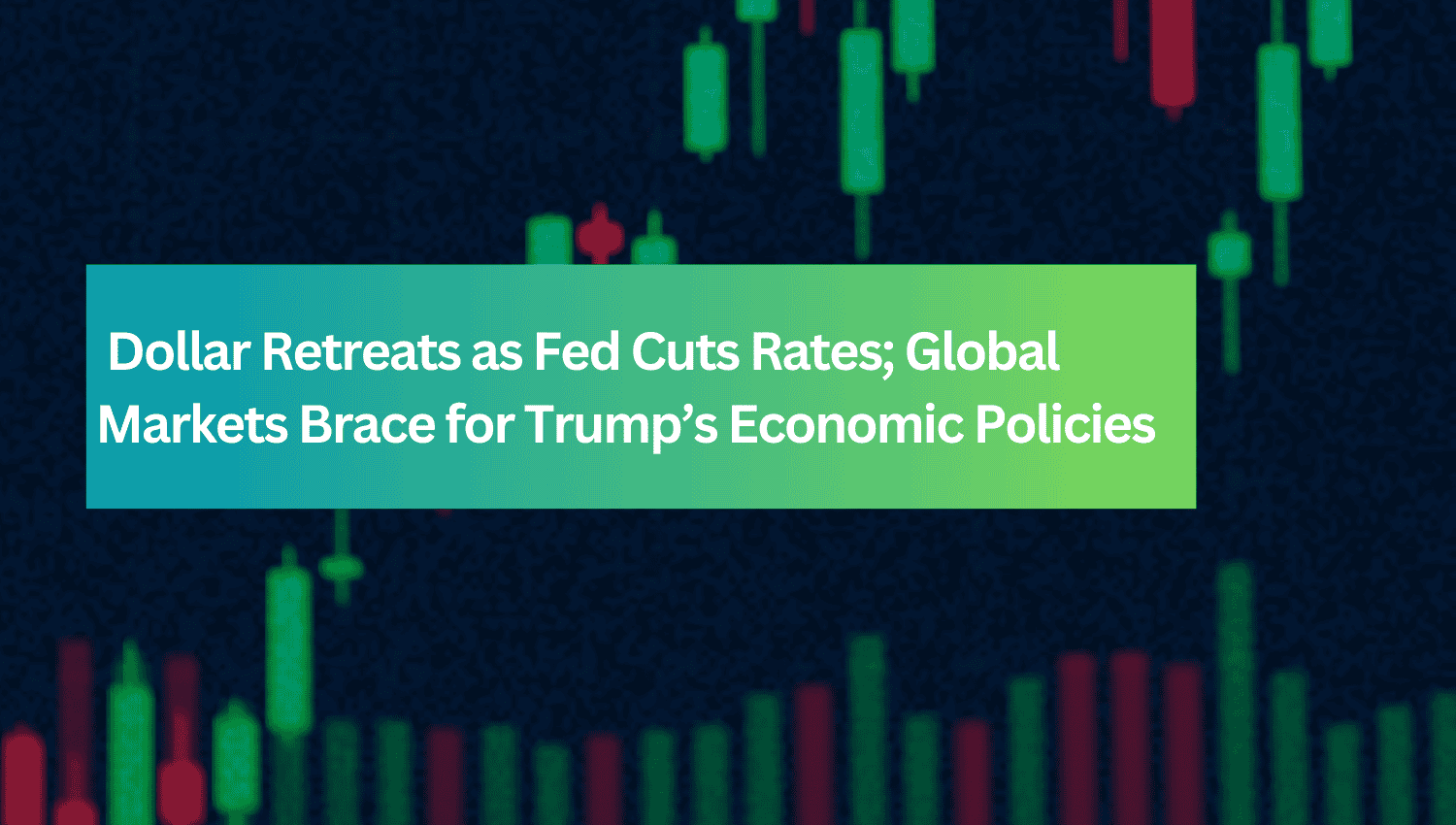Dollar Weakens as Fed Takes Cautious Stance Post-Rate Cut

Dollar Weakens as Fed Takes Cautious Stance Post-Rate Cut
The U.S. dollar dropped on Thursday, giving back gains from the previous day’s election-driven rally. The Federal Reserve delivered an expected 25-basis-point rate cut, bringing rates down to a 4.50-4.75% range. Fed Chair Jerome Powell hinted at a cautious approach, emphasizing that future policy adjustments will be assessed on a meeting-by-meeting basis. While recent U.S. economic data reflects strength, inflation remains elevated, prompting a tempered outlook from Powell. The dollar index pulled back from recent highs as traders recalibrated their positions in light of Powell’s cautious tone and expectations of steady Fed leadership under President-elect Donald Trump’s administration.
Central Banks Shift Policy as Global Economy Adjusts to New U.S. Administration
Global central banks followed suit, with the Bank of England cutting rates by 25 basis points and Sweden’s Riksbank making a larger 50-basis-point cut, while Norway’s Norges Bank opted to hold rates steady. The British pound gained as BoE Governor Andrew Bailey suggested that future rate cuts would be gradual, supported by anticipated fiscal expansion from the U.K. government. Meanwhile, the euro gained slightly despite regional concerns, including political instability in Germany, where Chancellor Olaf Scholz faced calls for a new election amid coalition troubles.
Commodity Currencies Surge Amid Rising Metal Prices and Risk-On Sentiment
The Australian dollar led gains among G10 currencies, boosted by climbing metal prices and positive market sentiment as traders anticipate pro-growth policies from the incoming Trump administration. Treasury yields dipped 4-7 basis points, while U.S. equities advanced, fueled by strong performance in tech and consumer sectors. Oil prices also edged higher as risk appetite improved on expectations of Trump’s potential economic measures.
Outlook: U.S. Policy and Global Trade Dynamics to Shape Market Sentiment
Looking ahead, the U.S. dollar may experience further pressure as the Fed takes a cautious stance and long positions unwind. Investors are closely watching the new administration’s policy direction, with tax cuts and infrastructure spending anticipated to boost risk assets. In Europe, potential U.S.-Europe trade tensions under Trump’s “America First” approach could pose headwinds for growth, possibly prompting further easing from the ECB. The Bank of England’s gradual approach to rate cuts may offer resilience for the pound, especially if fiscal measures in the U.K. stimulate economic growth. Meanwhile, commodity markets, especially metals, are expected to benefit from demand driven by U.S. and Chinese economic stimulus, while oil prices may remain buoyed by positive risk sentiment.
Currency Movements Reflect Fed’s Caution and Rising Commodity Demand
In currency trading, EUR/USD climbed 0.67% on dollar weakness and moderate euro support, despite eurozone challenges. USD/JPY fell 1.18%, driven by yen gains amid lower Treasury yields and a retreating dollar. GBP/USD rose 0.83%, bolstered by the BoE’s steady approach and supportive fiscal expectations from the U.K. AUD/USD surged 1.69% as the Australian dollar rallied on stronger metal prices and favorable risk conditions, with AUD/JPY up 0.50%. Cross-pairs reflected broader currency shifts, with EUR/JPY down 0.47% on yen strength, and GBP/JPY slipping by 0.32% due to demand for the yen.
Dollar Faces Near-Term Pressure; Commodity Currencies Poised for Gains
The dollar could face continued pressure as the Fed’s cautious stance influences markets, while long positions in the greenback may ease further. The euro remains susceptible to growth concerns but may gain if trade tensions with the U.S. ease. The pound is likely to hold steady, supported by the Bank of England’s gradual rate cuts and potential U.K. fiscal expansion. The yen may attract haven flows if global growth concerns arise, though this could be moderated in a risk-on environment. The Australian dollar is well-positioned to benefit from a robust commodity outlook, with the Canadian dollar expected to follow a similar path if oil prices remain firm. Currency markets appear set for dynamic shifts in response to central bank policies, growth outlooks, and Trump’s forthcoming economic policies.

